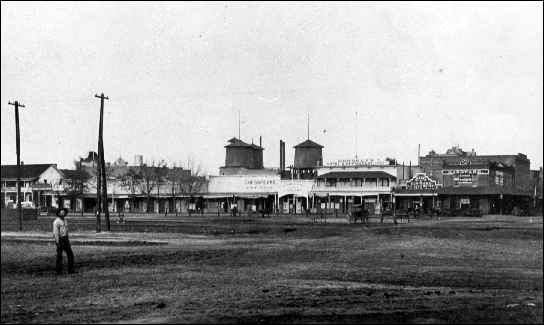Modesto Village

One of the earliest photos of I Street in Modesto shows a muddy street surrounded by buildings, most of which had been moved from Paradise and Tuolumne City. This was the new village that was laid out by the Central Pacific Railroad in the center of Paradise Valley. It would be the next century before the streets were paved and the muddy mess subsided.
Modesto was not unlike other towns of the Old West. Front Street boasted saloons and rowdy cowboys. There was Chinatown with opium dens and other exotic experiences. Shootouts were common, and vigilante justice prevailed when law and order couldn't be handled in any other way.
Next: Early History/A Railroad Town/County Seat
Previous: Early History/A Railroad Town/A 'Modest' Man
Ross House at I Street and Front
I Street, c. 1885. The building in the background is Ross House, transported in two sections from Paradise City. The original Southern Pacific Station is on the right. The photo is taken down I Street, which the railroad designed as the broadest street in the new village at 100 feet wide. | The Front
The Front, c. 1880. The rowdiest part of town. Taken from the middle of H Street, west of the railroad tracks. Ross House can be seen to the left with several businesses to the right. Rogers Hall, with its second story meeting hall-theater, is on the extreme right. The Front boasted saloons, opium dens and vice parlors. |
The 160 Acre Village
|


